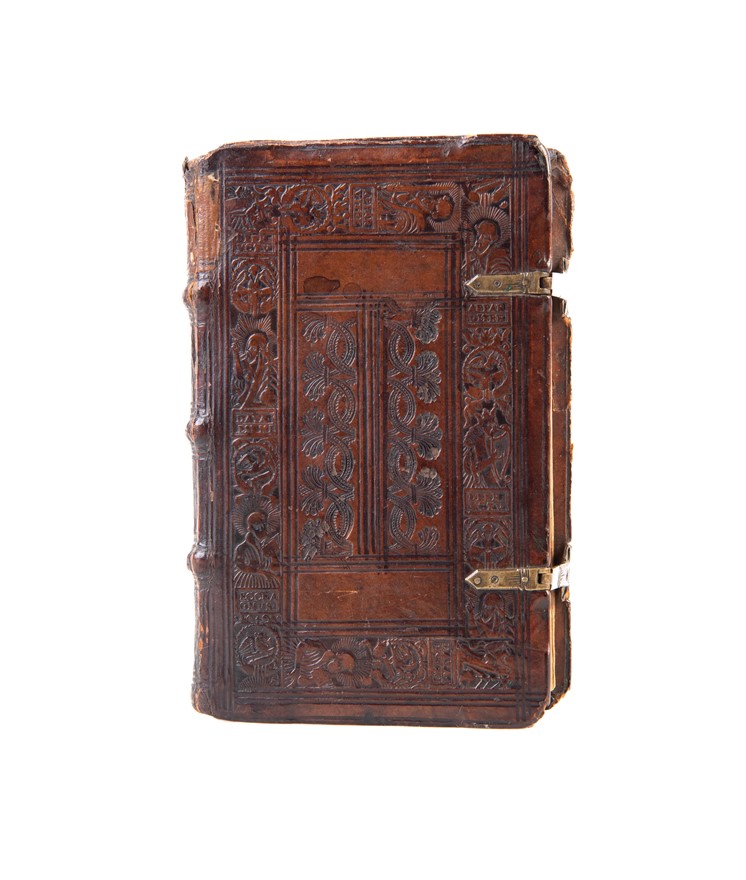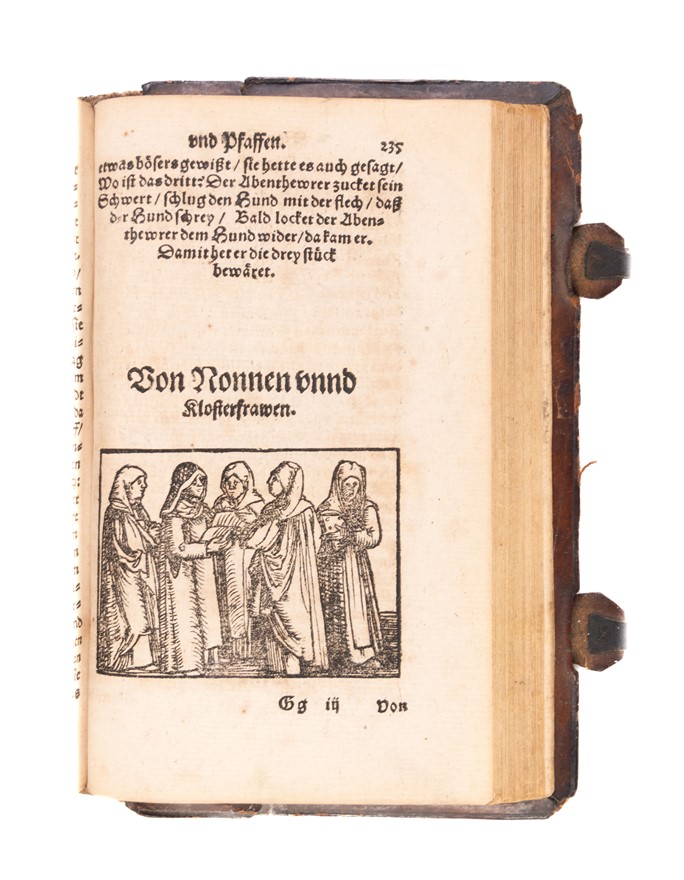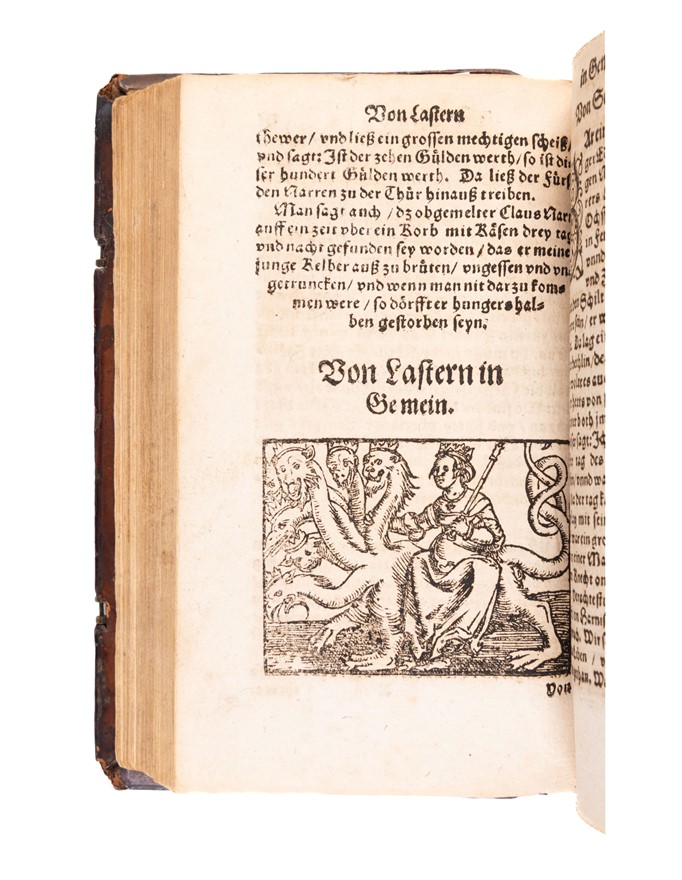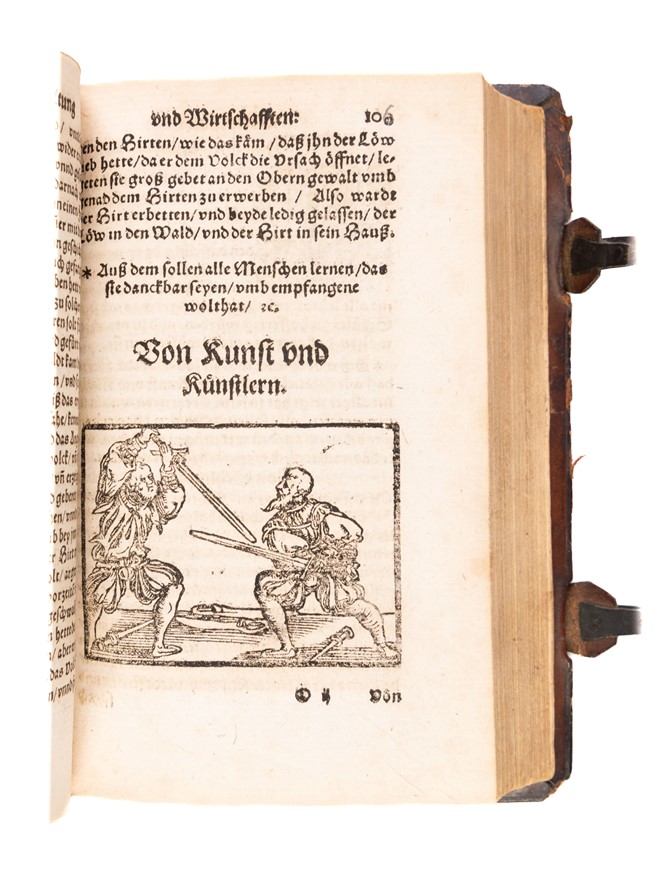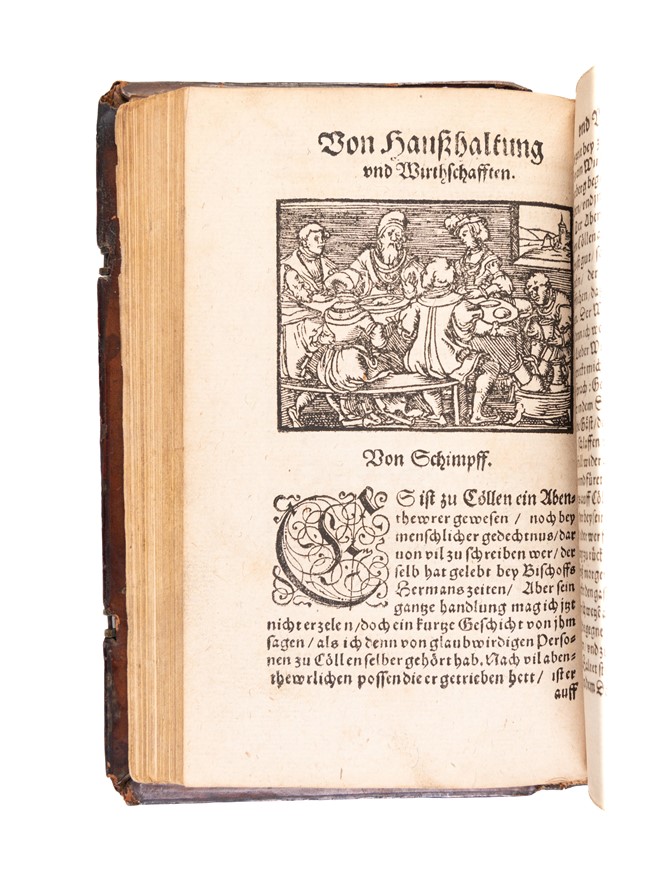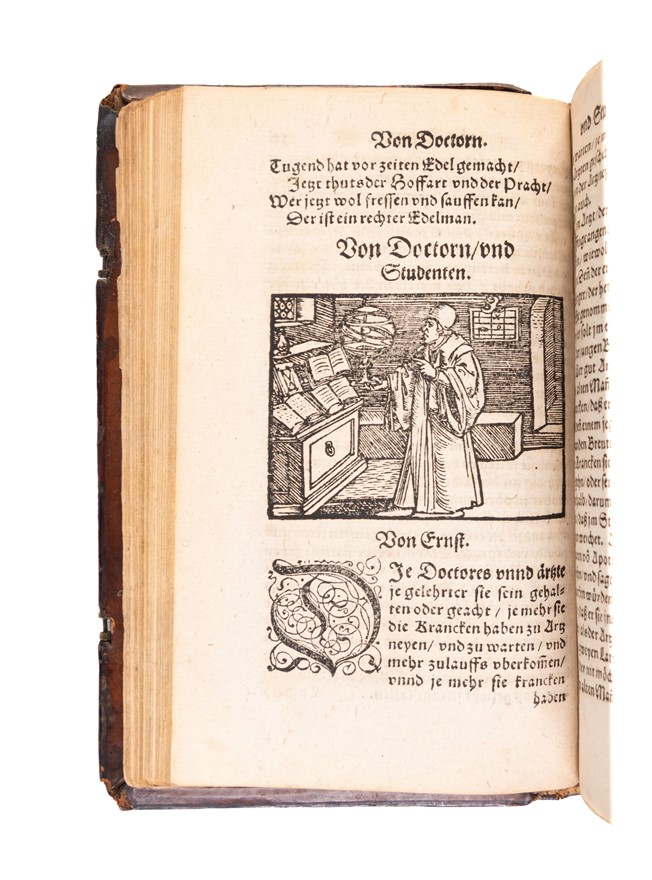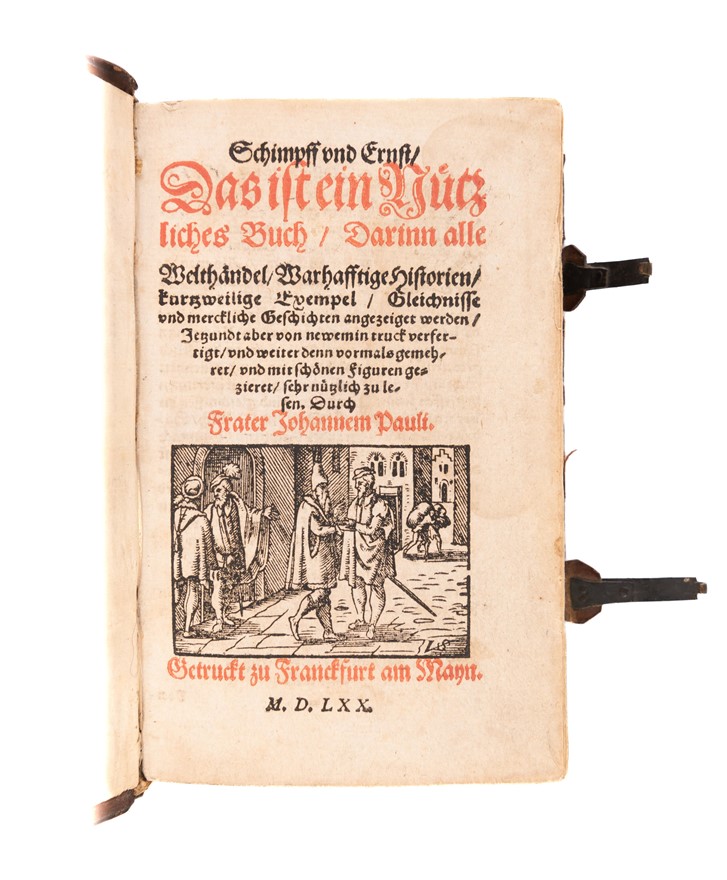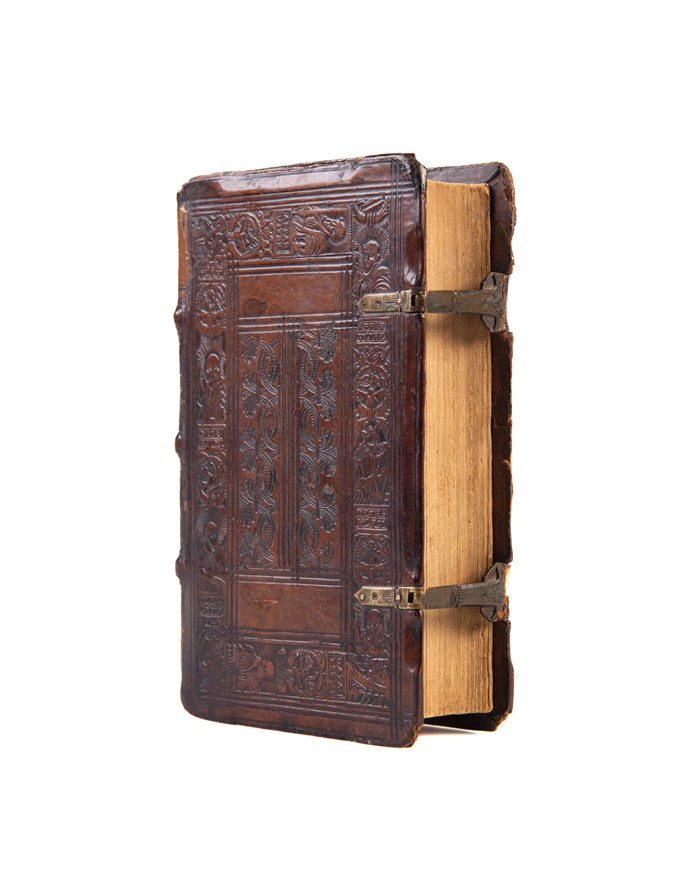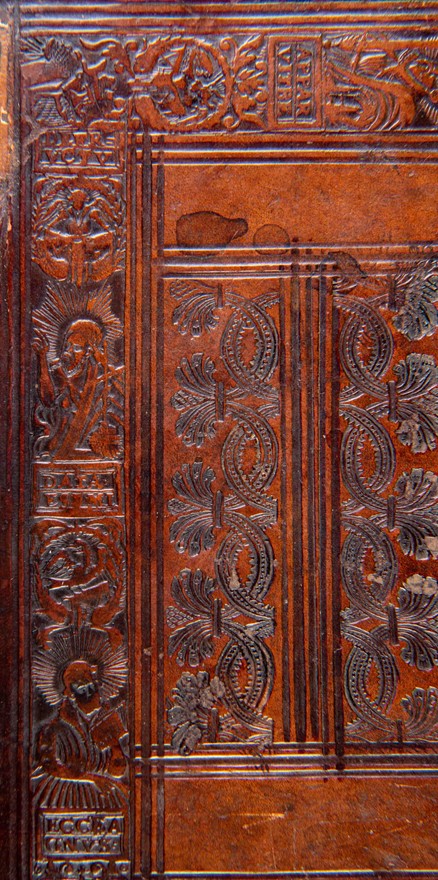Schimpff und Ernst, Das ist ein Nützliches Buch, Darinn alle Welthändel… angezeigt werden… von newen in truck verfertiget…Frankfurt, (Nikolaus Basse), 1570.
PAULI Johann (1570)
£5000.00
Please contact us in advance if you would like to view this book at our Curzon Street shop.
A RARE EDITION, FROM THE LIBRARY OF SAMUEL PUTNAM AVERY
Title printed in red and black, 13 woodcut illustrations showing rulers, judges, teachers, two men fencing, nuns, monks, a household at a table, a group of fools, etc.
8vo (168 x 100mm). 276, [11]ff (lacks final blank). Contemporary German blind stamped calf over beveled boards, covers with a central panel of repeated ornamental roll, outer border of half-length figures of Christ (DATA/ EST MI), St. Paul ( APPAR/VIT BE), John the Baptist (ECCE A/GNUS) and King David (DE FR/VCTV) with emblems, brass clasps and catches intact, later label at head of spine (minor cracks to spine, some wear to extremities).
Frankfurt, (Nikolaus Basse), 1570.
A finely bound and well illustrated edition of this famous Schwankbuch, a form of joke book, from the library of the New York art connoisseur Samuel Putnam Avery. This edition is very rare with OCLC recording only four copies, all in German libraries.
This collection, one of the earliest German gatherings of 16th century tales, was largely compiled from older ecclesiastical and secular writers, (including Petrarch, Bebel, and Poggio and the German tale Dyl Ulenspiegel), but also included some written by Pauli himself. The work first appeared in 1522 in an unillustrated edition, with the first illustrated edition appearing in 1533; it became very popular with around 50 editions appearing in the 16th and 17th centuries.
The work is written in a terse colloquial style in which Ernst (the good) and Schimpf (the evil) are cast in high relief against a backdrop of English dogs, nobles, Jews, landlords, and women. It provided a German alternative to the widely circulated Latin exempla and the Facetiae of the humanists Poggio and Bebel. In this edition the 450 plus tales are arranged into 13 different sections which include topics such as rulers, judges and notaries, doctors and students, art and artists, a domestic household, monks, nuns, and death, etc. Johannes Pauli was a Strasbourg Franciscan monk who was guardian to the Barefooted Cloister in Berne.
The unsigned binding rolls are well preserved and although common enough subjects we have not been able to find them on EBDB.
Provenance: from the library of the celebrated art dealer, collector and philanthropist, Samuel Putnam Avery (1822-1904) of New York, founder of the Avery Architecture Library at Columbia University, sold at his sale of 'Rare and Valuable Books & Bindings', Anderson Galleries NY, November, 1919, previously exhibited and listed as no 125 in his Catalogue raisonné. Works on Bookbinding practical and historical, examples of bookbindings of the XVIth to XIXth centuries from the collection of S. P. Avery, A.M., exhibited at Columbia University Library MDCCCCIII. [Compiled by C. A. Nelson], NY 1903.
Two early inscriptions inside front cover, one dated Lübeck(?), 18 July, 1574.
VD16 P964. OCLC: Herzog August Bibliothek, Thuringer UB, Bayerische SB, Augsburg SB only. Goed I, 404..
Stock Code: 244846
